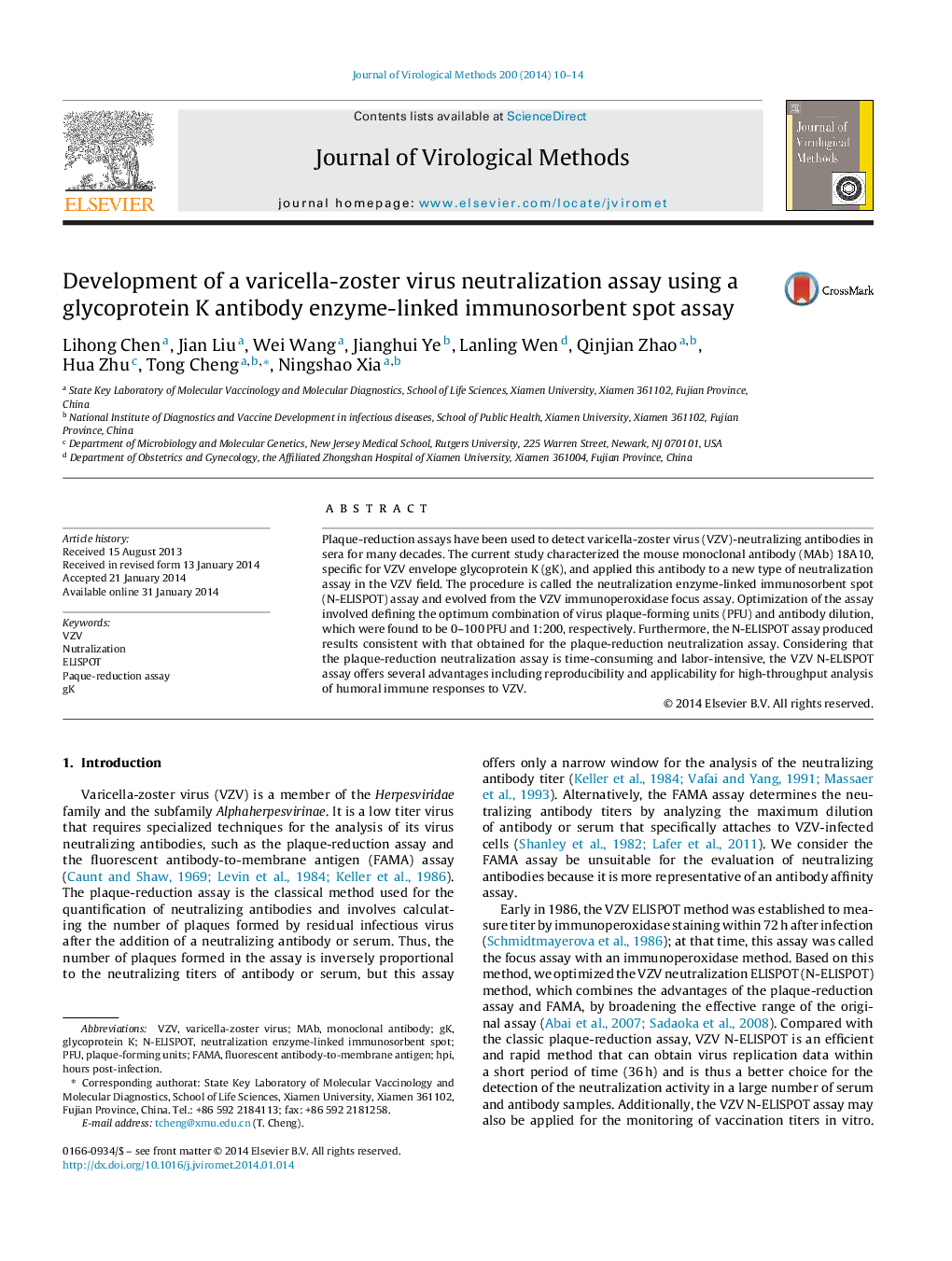| Article ID | Journal | Published Year | Pages | File Type |
|---|---|---|---|---|
| 3406625 | Journal of Virological Methods | 2014 | 5 Pages |
•Similar to the ELISPOT method, we developed a VZV neutralization enzyme-linked immunosorbent spot (N-ELISPOT) system.•We applied it to quantify virus, optimizing the test antibody dilution.•Compared with the plaque assay, the VZV N-ELISPOT was accurate and reliable for the detection of neutralizing serum samples.
Plaque-reduction assays have been used to detect varicella-zoster virus (VZV)-neutralizing antibodies in sera for many decades. The current study characterized the mouse monoclonal antibody (MAb) 18A10, specific for VZV envelope glycoprotein K (gK), and applied this antibody to a new type of neutralization assay in the VZV field. The procedure is called the neutralization enzyme-linked immunosorbent spot (N-ELISPOT) assay and evolved from the VZV immunoperoxidase focus assay. Optimization of the assay involved defining the optimum combination of virus plaque-forming units (PFU) and antibody dilution, which were found to be 0–100 PFU and 1:200, respectively. Furthermore, the N-ELISPOT assay produced results consistent with that obtained for the plaque-reduction neutralization assay. Considering that the plaque-reduction neutralization assay is time-consuming and labor-intensive, the VZV N-ELISPOT assay offers several advantages including reproducibility and applicability for high-throughput analysis of humoral immune responses to VZV.
